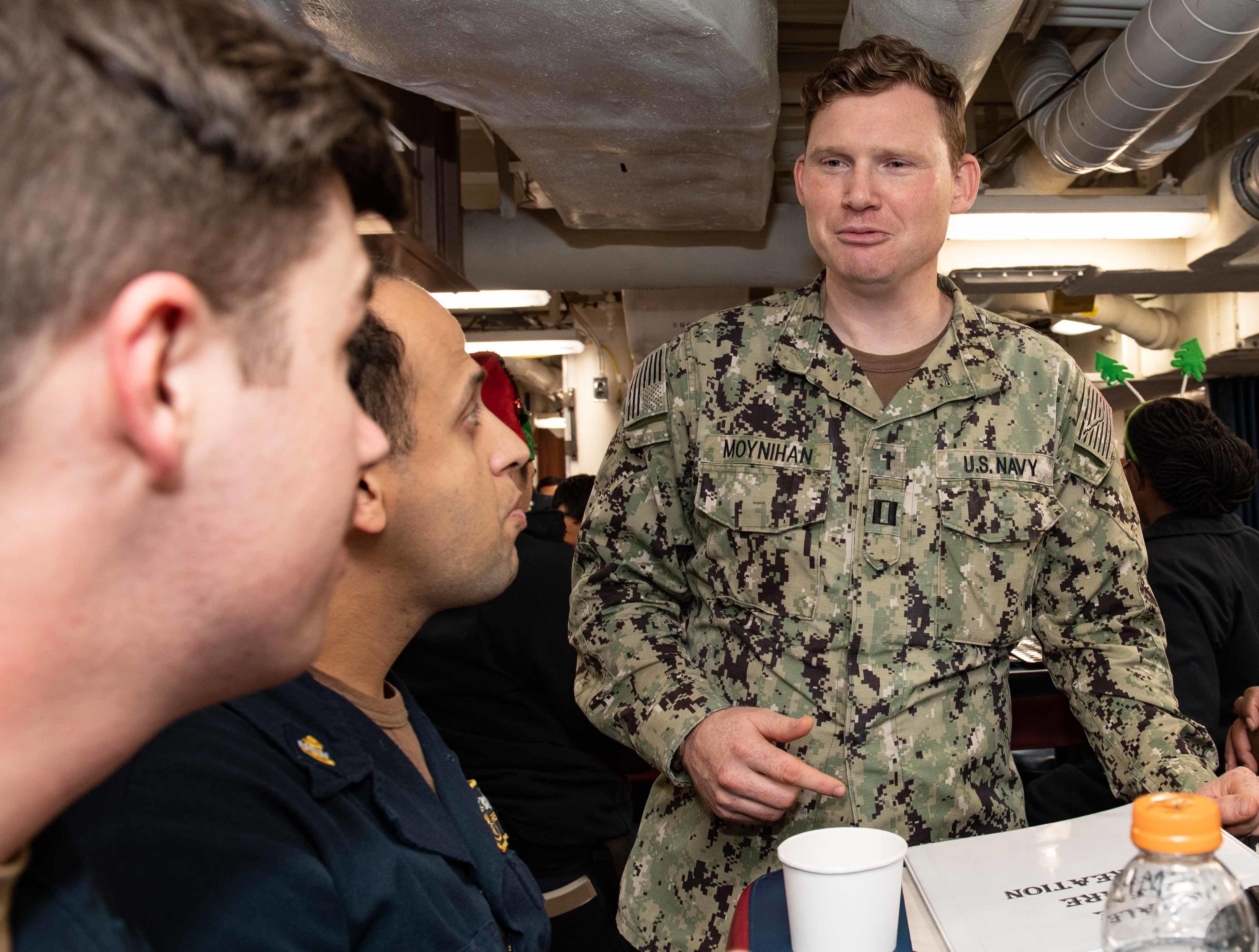The Navy’s initiative to permanently embark chaplains aboard guided-missile destroyers has proven successful in addressing mental health issues — and likely means the Navy needs to recruit more chaplains in the future, according to the commander of Naval Surface Forces, Vice Adm. Roy Kitchener.
“I think the chaplain initiative was one of the best things we’ve done,” Kitchener told reporters. “The feedback I get from commanding officers, ships that have chaplains on board — we tend to see less unplanned losses and less issues.”
In December 2021, the Navy launched an effort to incorporate chaplains as permanent members of guided-missile destroyer crews. The effort was a departure from previous custom, where chaplains would head out to destroyers during work ups as “ship riders,” Navy Times previously reported.
RELATED

But now, the service has nearly 30 chaplains permanently assigned to destroyers in the Pacific and the Atlantic, and the Navy is aiming to embark chaplains on every destroyer by 2025. As a result, the Navy may need to recruit more chaplains to fulfill the need, Kitchener said.
“We put the demand signal out there, we’ve shown the impact through analytics, and ‘hey, it works, it makes a difference,’” Kitchener said. “And then it’s been over the chaplain corps to generate resources for us to put in. … We’ve got a demand signal. That means they’ve probably got to bring more people in.”
The effort to embark chaplains, which started in 7th Fleet with Destroyer Squadron 15, strives to foster sailor resiliency across the force.
“Leaders have identified our Sailors as an asymmetrical advantage against our adversaries,” Capt. Daniel Mode, fleet chaplain for 7th Fleet, said in a Navy news release in December 2021. “Keeping Sailors healthy and resilient is a critical leadership priority. Responding to a demand signal from Surface Leadership for more chaplains operating in the Fleet, the Chaplain Corps through the [Naval Surface Force, U.S. Pacific Fleet] Chaplain developed strategies to increase budget and recruiting chaplains specifically billeted to DDGs. The proposal was unanimously approved at all leadership levels from the CNO on down.”
In December, the service unveiled the results of its investigation into multiple suicides aboard the aircraft carrier George Washington, which has been undergoing its mid-life refueling and complex overhaul at Newport News Shipbuilding since August 2017.
Although the investigation found that the three deaths over the course of six days in April 2022 were not related, the report also characterized the ship’s psychologist and the behavioral health technician as “overwhelmed.” Both faced a backlog of roughly four to six weeks for initial appointments, the report found.
That challenge is reflected across the entire service as the Navy struggles to fill positions for mental health providers amid a national shortage. In a leaked all-call with sailors aboard the George Washington in April 2022, former Master Chief Petty Officer of the Navy Russell Smith said that when he needed some help he was told there was a six-week wait to see a Navy provider, prompting him to seek private care “because I can afford to.”
“You can’t just snap your fingers and grow a psychiatrist,” Smith told the sailors. “That takes years, decades of school and training and practice and internship and everything else that gets you to that point.”
Troops and veterans experiencing a mental health emergency can call 988 and select option 1 to speak with a VA staffer. Veterans, troops or their family members can also text 838255 or visit VeteransCrisisLine.net for assistance.





